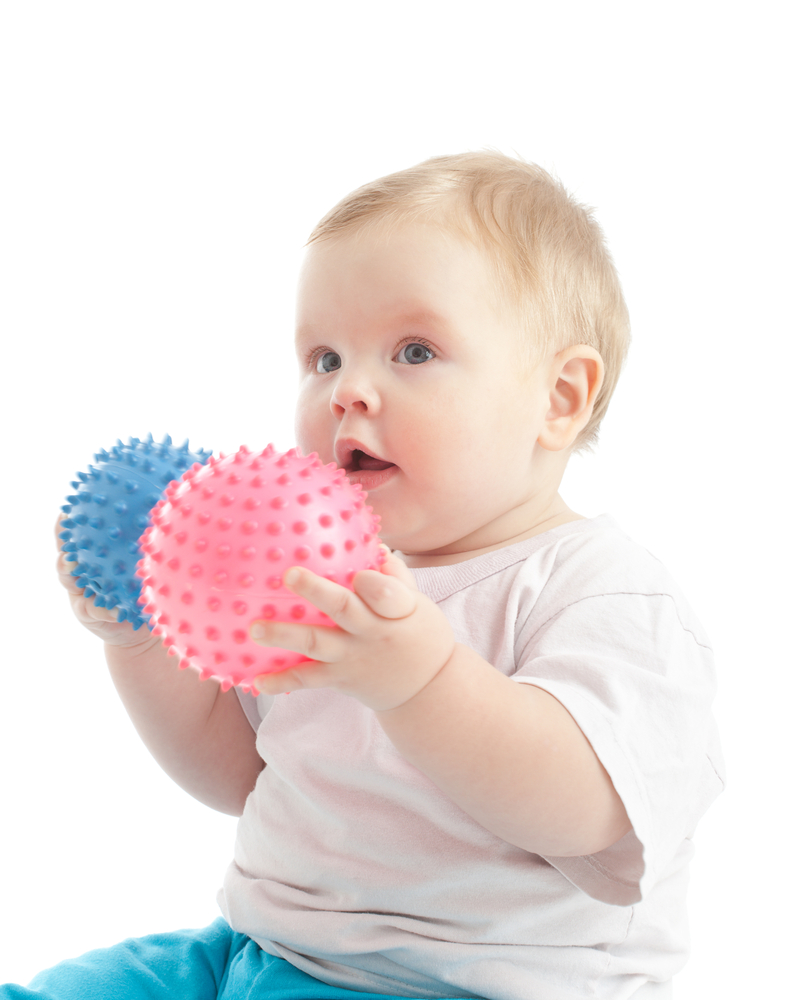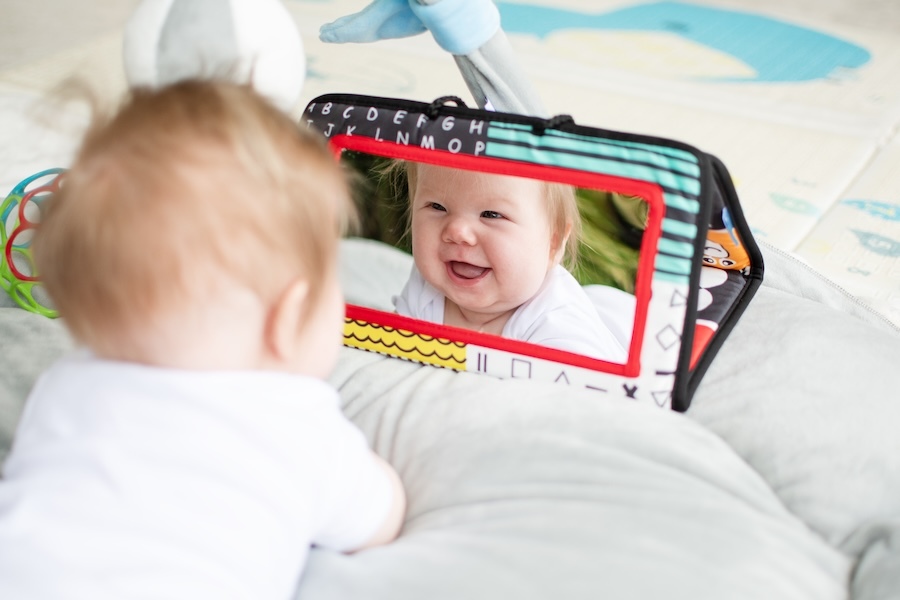Why Does My Baby Touch My Face?
Why Does My Baby Touch My Face?
A Complete Guide to Understanding Your Baby's Development, Bonding Behaviors, and Sensory Exploration

When your baby reaches up with their tiny hands to touch your face, it's one of the most heartwarming moments in parenthood. But have you ever wondered what drives this seemingly simple behavior? The answer lies in a fascinating world of developmental milestones, sensory exploration, and the deep bonds that form between parent and child.
This comprehensive guide explores the science behind why babies touch faces, what it means for their development, and how you can support this crucial aspect of your child's growth. From the neurological processes that drive facial recognition to the emotional connections that strengthen through touch, we'll uncover the remarkable journey of infant development that unfolds through these tender moments.
Quick Overview: What You'll Learn
- The developmental science behind face-touching behavior
- How sensory exploration shapes your baby's understanding of the world
- The role of attachment and bonding in facial recognition
- Milestones to watch for in your baby's development
- Practical tips for encouraging healthy development
The Science Behind Baby Face-Touching Behavior

Understanding Infant Neurological Development
The human brain undergoes remarkable development during the first years of life, with neural pathways forming at an astonishing rate. When your baby touches your face, they're engaging multiple sensory systems simultaneously, creating complex neural connections that will serve them throughout their lives. This behavior is far from random – it's a sophisticated developmental process that combines sensory exploration, cognitive development, and emotional bonding.
Research in developmental neuroscience has shown that babies are born with an innate fascination for faces. The fusiform face area of the brain, responsible for facial recognition, begins developing in infancy and continues to mature throughout childhood. When babies touch faces, they're gathering crucial sensory information that helps build these neural pathways, creating the foundation for social interaction and emotional recognition.
Key Developmental Insight
Face-touching behavior typically emerges around 2-4 months of age when babies develop better hand-eye coordination and begin to understand that their hands belong to them. This marks a significant milestone in their journey toward self-awareness and social connection.
The Multi-Sensory Experience of Touch
When your baby touches your face, they're not just feeling texture and temperature – they're engaging in a rich multi-sensory experience that includes visual, tactile, and even proprioceptive feedback. The skin on their fingertips contains thousands of nerve endings that send detailed information to their developing brain about the world around them.
This tactile exploration serves several crucial developmental purposes. First, it helps babies understand spatial relationships and develop their sense of object permanence. Second, it provides essential sensory input that contributes to brain development and neural pathway formation. Third, it serves as a foundation for later fine motor skills and hand-eye coordination that will be essential for activities like writing, drawing, and manipulating objects.
Expert Insight
"The tactile system is the first sensory system to develop in utero, and touch remains one of the most important ways babies learn about their environment. Face-touching behavior represents a sophisticated integration of multiple developmental systems working together." - Dr. Sarah Johnson, Developmental Pediatrician
Did You Know?
Babies have a higher concentration of touch receptors per square inch than adults, making their tactile experiences incredibly rich and detailed. This heightened sensitivity helps explain why face-touching provides such valuable sensory information for their developing brains.
Sensory Development and Early Exploration

The Foundation of Sensory Learning
Sensory development begins long before birth, but the first year of life represents a critical period for sensory integration and learning. Your baby's face-touching behavior is a manifestation of their innate drive to explore and understand the world through their senses. This exploration is not random but follows predictable patterns that correspond to brain development and maturation.
The tactile system, which includes touch, pressure, temperature, and pain receptors, is fully functional at birth and continues to refine throughout infancy. When babies touch faces, they're gathering information about texture (smooth versus rough), temperature (warm versus cool), moisture levels, and spatial boundaries. This information gets processed in the somatosensory cortex of the brain, where it contributes to the development of body awareness and spatial understanding.
Stages of Tactile Development
0-2 Months: Reflexive Touch
During the first two months, babies primarily engage in reflexive touching behaviors. Their grasp reflex is strong, and they may accidentally touch faces during feeding or when being held. This stage lays the groundwork for intentional touching behaviors that emerge later.
2-4 Months: Purposeful Exploration
Around 2-4 months, babies begin to gain better control over their hand movements and start touching faces more intentionally. They become fascinated by different textures and may spend long periods exploring facial features like noses, lips, and hair.
4-6 Months: Coordinated Movement
By 4-6 months, babies develop more coordinated hand-eye movements and can reach for specific facial features with greater accuracy. They may show preferences for certain textures or temperatures and begin to associate touch with emotional responses.
6+ Months: Complex Integration
After six months, face-touching becomes part of more complex social behaviors. Babies begin to use touch as a way to communicate, show affection, and explore social boundaries. They may pat faces gently or grab glasses, demonstrating increasingly sophisticated motor planning abilities.

The Role of Sensory Integration
Sensory integration is the process by which the nervous system receives, organizes, and responds to sensory information. For babies, face-touching provides rich opportunities for sensory integration as they combine tactile information with visual and proprioceptive feedback. This integration is crucial for developing body awareness, motor planning, and social understanding.
Research has shown that babies who engage in regular tactile exploration, including face-touching, often show better sensory integration skills later in childhood. This can translate to advantages in areas such as fine motor development, social skills, and even academic readiness. The simple act of touching a parent's face provides a foundation for complex learning processes that will continue throughout life.
Supporting Sensory Development
Encourage healthy sensory exploration by:
- Allowing safe face-touching during calm, bonding moments
- Providing various textures for exploration (soft blankets, textured toys)
- Engaging in gentle massage and skin-to-skin contact
- Responding positively to your baby's exploratory behaviors
- Creating a rich sensory environment with appropriate stimulation
Facial Recognition, Bonding, and Attachment
:max_bytes(150000):strip_icc()/parentswhencanbabiesrecognizefaces-af8379b1ad4845d8a75db73c8e35e165.png)
The Remarkable Journey of Facial Recognition
One of the most remarkable aspects of infant development is how quickly babies learn to recognize and prefer familiar faces. From birth, babies show a preference for face-like patterns, and by just a few days old, they can distinguish their mother's face from that of a stranger. This incredible ability forms the foundation for social development and emotional bonding that will last a lifetime.
The process of facial recognition involves complex neural networks that develop rapidly during the first months of life. When babies touch faces, they're not just exploring physical features – they're building detailed mental maps that help them recognize loved ones, understand emotions, and navigate social relationships. This tactile component adds crucial information to their vis
